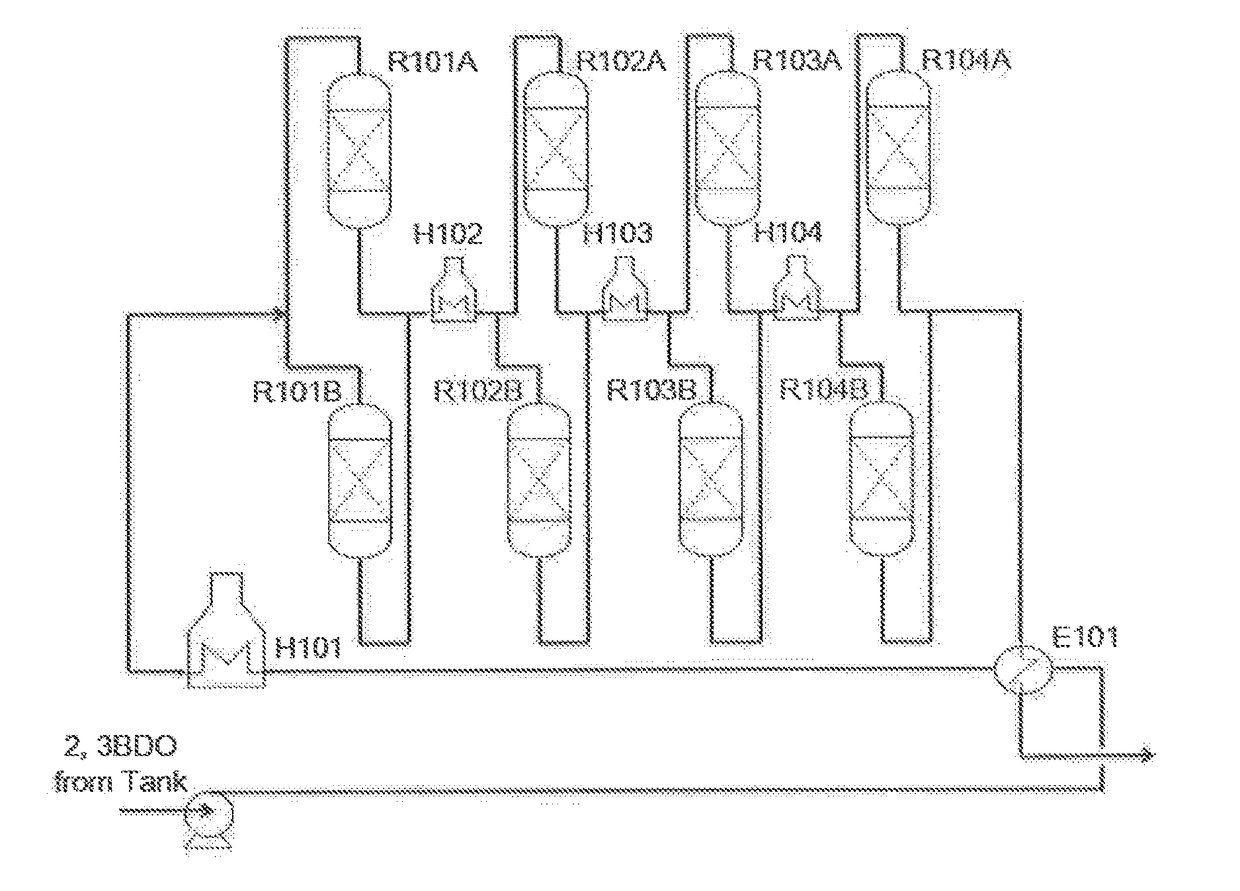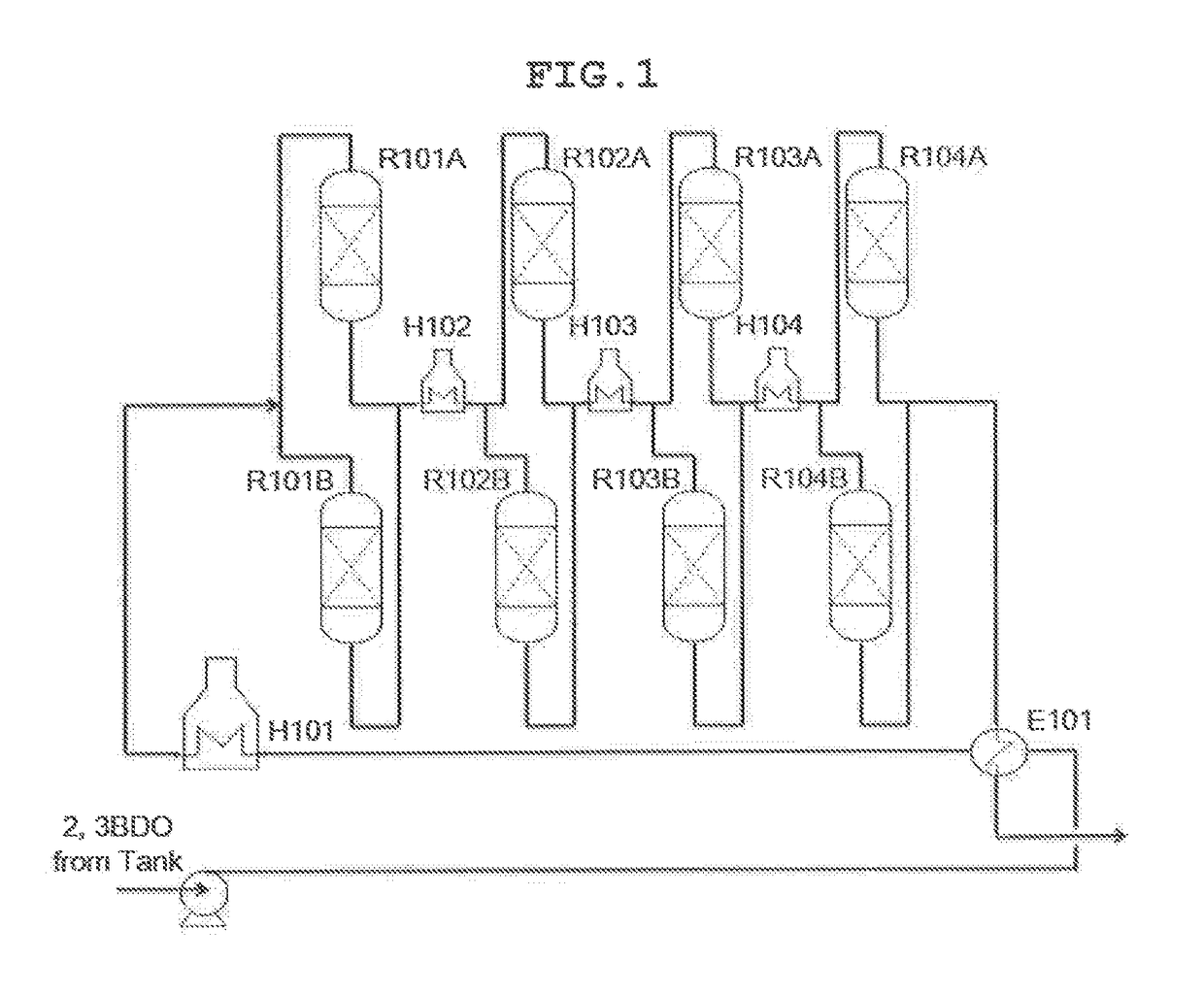Method of preparing 1,3-butadiene and methyl ethyl ketone from 2,3-butanediol using adiabatic reactor
a technology of methyl ethyl ketone and adiabatic reactor, which is applied in the direction of carbonyl compound preparation by oxidation, hydrocarbon preparation catalyst, organic chemistry, etc., can solve the problems of difficulty in maintenance and need of additional devices, and achieve economic and efficient conversion
- Summary
- Abstract
- Description
- Claims
- Application Information
AI Technical Summary
Benefits of technology
Problems solved by technology
Method used
Image
Examples
example 1
[0079]As a dehydration catalyst, an amorphous calcium phosphate-based catalyst (Ca / P molar ratio=1.2) was used, four adiabatic reactors were connected in series, and the dehydration of 2,3-butanediol was carried out under the conditions shown in Table 4 below. The inlet temperature of the reactor indicates the temperature of the stream introduced into the reactor. The reaction results are shown in Table 5 below.
TABLE 4Reactor inletReactor inletpressureWHSVtemperatureReactor sizeReactor[kgf / cm2g][1 / hr][° C.]Width [m]× length [m]12.20.9823655.0 × 2.221.850.9723655.0 × 2.231.50.9783655.0 × 2.241.210.9583652.4 × 7.5
PUM
| Property | Measurement | Unit |
|---|---|---|
| temperature | aaaaa | aaaaa |
| temperature | aaaaa | aaaaa |
| Ca/P molar ratio | aaaaa | aaaaa |
Abstract
Description
Claims
Application Information
 Login to View More
Login to View More - R&D
- Intellectual Property
- Life Sciences
- Materials
- Tech Scout
- Unparalleled Data Quality
- Higher Quality Content
- 60% Fewer Hallucinations
Browse by: Latest US Patents, China's latest patents, Technical Efficacy Thesaurus, Application Domain, Technology Topic, Popular Technical Reports.
© 2025 PatSnap. All rights reserved.Legal|Privacy policy|Modern Slavery Act Transparency Statement|Sitemap|About US| Contact US: help@patsnap.com



